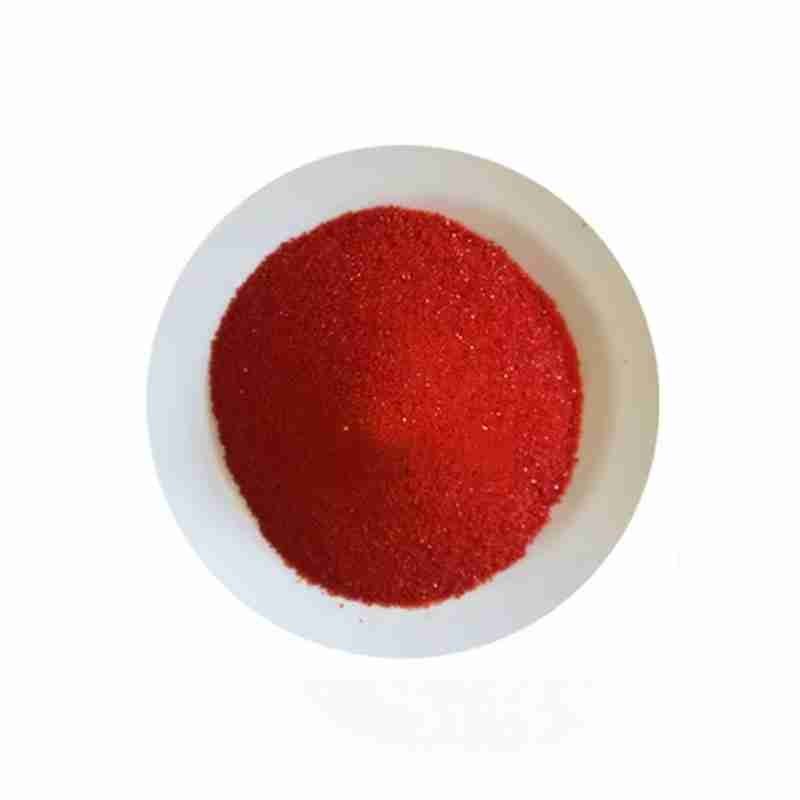Iron Hydroxide Oxide CAS #20344-49-4
Iron oxides, including iron hydroxides and hydrated oxides, are natural minerals and geocatalysts that are abundant in the earth??s crust. Because the chemical properties of iron are very reactive, there are many secondary iron minerals, such as maghemite (??-Fe2O3), hematite (??-Fe2O3), lepidocrocite (??-FeOOH), goethite ( ??-FeOOH), hydrated iron (III) oxide (Fe5HO8??4H2O) and magnetite (Fe3O4) exist in large amounts as suspended matter in the water system. Iron oxides play a very important role in various chemical and biological processes involving the transformation of organic compounds in aquatic ecosystems.
Hydrated iron (III) oxide refers to a natural nanoscale iron hydroxide mineral commonly found in the natural environment (soil, water sediments, etc.), and can also be easily synthesized in the laboratory. Hydrated iron(III) oxide is difficult to characterize due to its small size and low crystallinity.
发送询盘
Iron Hydroxide Oxide CAS #20344-49-4
| Iron hydroxide oxide Basic information |
| Product Name: | Iron hydroxide oxide |
| Synonyms: | Ferric oxide hydroxide;Ferrous acid;Iron monohydroxide monooxide;Iron(III) hydroxide, ^y-phase;Iron(III) hydroxide, ^a-phase;Iron(III) hydroxide, gamma-phase;Iron(III)oxide,Ferric hydroxide oxide;Goethite,Ferric hydroxide oxide, Iron(III)oxide |
| CAS: | 20344-49-4 |
| MF: | FeHO2 |
| MW: | 88.85 |
| EINECS: | 243-746-4 |
| Product Categories: | Metal and Ceramic Science;Oxides;Inorganics |
| Mol File: | 20344-49-4.mol |
 |
|
| Iron hydroxide oxide Chemical Properties |
| Melting point | 135??C |
| density | 3.4-3.9 |
| RTECS | NO7400000 |
| solubility | DMSO (Sparingly), Methanol (Slightly), Water (Soluble) |
| form | crystalline |
| color | Red-brown |
| Water Solubility | Soluble in mineral acids. Insoluble in water and ethanol. |
| Merck | 14,4025 |
| Exposure limits | ACGIH: TWA 1 mg/m3 NIOSH: TWA 1 mg/m3 |
| Stability: | Stable. |
| CAS DataBase Reference | 20344-49-4(CAS DataBase Reference) |
| NIST Chemistry Reference | iron(III) oxide hydroxide(20344-49-4) |
| EPA Substance Registry System | Iron hydroxide oxide (Fe(OH)O) (20344-49-4) |
- 2
- 2-diallylpent-4-en-1-amine
- 4
- 95-16-9
- Ammonium sulfamate
- Benzothiazole
- cas:67889-00-3ح2
- cas:83524-75-8 | pigment black 32
- cas:928836-00-4 | 2
- cas:932745-70-5 | 4
- Chemical Minerals
- Coconut diethanolamide
- Daily Chemicals
- discount
- for sale
- General pvc resin
- hexyl D-glucoside
- in stock
- Lauramidopropyl betaine
- LAURIC ACID MONOETHANOLAMIDE
- Petroleum Additives
- Plasticiser
- Ploymers
- price
- PVC
- quotation
- Raw Materal
- Remove term: Petroleum Additives Petroleum Additive
- SODIUM ETHYL 2-SULFOLAURATE
Related Products
Bentonite, sodium-activated, is a type of clay rich in montmorillonite minerals, which undergoes a process to increase its sodium content. This alteration enhances its swelling and adsorptive properties, making it a highly effective thickener and gel-forming agent. Sodium bentonite is widely used in drilling muds, foundry sands, and as a binder in various industrial applications. Its ability to absorb liquids and form stable gels makes it invaluable in cosmetics, agriculture, and as a component in the manufacturing of ceramics and paper products.
Chemical Name: Arabic gum
CAS No.: 9000-01-5
Appearance: powder
Sodium aluminosilicate (CAS No.73987-94-7) is an inorganic compound.
It has a certain application in industry. For example, in the ceramic industry, sodium aluminosilicate can be used as a flux and an ingredient in ceramic glazes, helping to improve the performance and appearance of ceramics.
In some chemical processes, it may also function as a precipitating agent or an additive.
In the field of materials science, the properties and structural characteristics of sodium aluminosilicate make it have potential application value in the research and development of some new materials.
Product name:Cyclopentane
Purity:96%
Appearance:White powder
Package:25kg/bag
Sample:Available
Strontium chloride is an inorganic compound with the chemical formula SrCl2. It is a white crystalline solid that is highly soluble in water. This compound is used in various applications, including the production of strontium salts for??? and pyrotechnics, where it imparts a deep red color to the flame. Additionally, strontium chloride is utilized in metallurgy as an ingredient in alloys and in the medical field for certain diagnostic procedures. Its chemical properties make it a valuable substance in a range of industrial and scientific applications.
Kaolin, also known as china clay, is a naturally occurring hydrated aluminum silicate mineral. It is a soft, white, plastic clay that is widely used in ceramics, papermaking, and as a pigment in paints, coatings, and plastics. Kaolin is valued for its fine particle size, purity, and ability to improve the brightness and opacity of materials. Its inert nature and high refractive index make it ideal for various industrial applications, including cosmetics and pharmaceuticals.
Chemical Name: 1,1,2,2-Tetrachloroethane
Other Name: Tetrachlorethane
CAS No.: 79-34-5
Molecular Formula: C2H2Cl4
Molecular Weight: 167.85
Appearance: Liquid
Carbon is a fundamental element found in all organic life and a key component of many inorganic materials. It is known for its ability to form long chains and complex structures, which makes it the basis of various compounds, including diamond, graphite, and fullerenes. Carbon is used in a wide range of applications, from manufacturing steel and other alloys to being a key element in batteries and as a pigment in inks and paints.
Silicon dioxide, commonly known as silica, is a naturally occurring compound found in quartz and sand. It is a primary component of most rocks and is widely used in various industries due to its high thermal stability, chemical inertness, and optical clarity. In chemical applications, it is valued for its abrasive, refractory, and adsorptive properties, making it essential in products like glass, ceramics, and electronics.
Chemical Name: 3-Hydroxybutyric acid
CAS No.: 625-71-8
Molecular Formula: C4H8O3
Molecular Weight: 104.1
Appearance: White powder
Product name:HYDROXYPROPYL GUAR HYDROXYPROPYLTRIMONIUM CHLORIDE
Purity:99%
Appearance:Light Yellow Powder
Package:Customized according to customer needs.
Sample:Available
Chemical Name: UV-120
Other Name: (2’,4’-Di-tert-butylphenyl 3,5-di-tert-butyl-4-hydroxybenzoate)
CAS No.: 4221-80-1
Molecular Fomula: C29H42O3
Molecular weight: 438.66
Assay: ≥99%(LC)

















